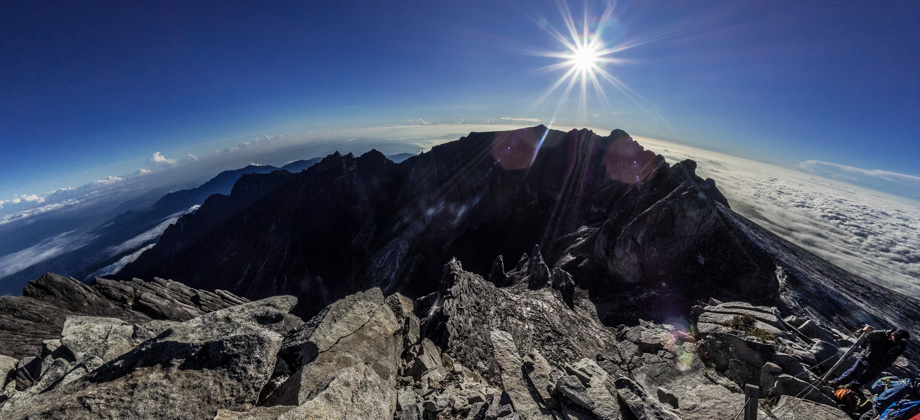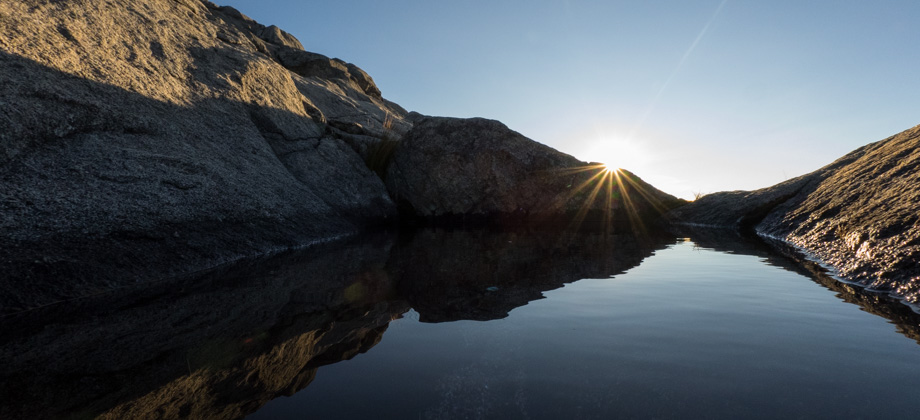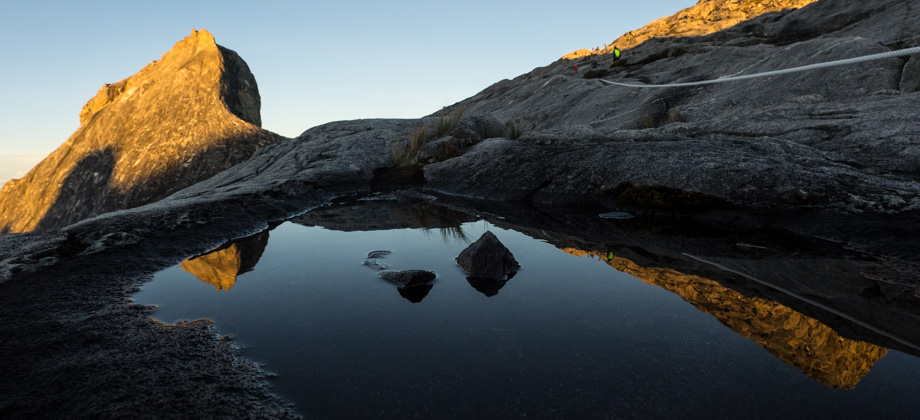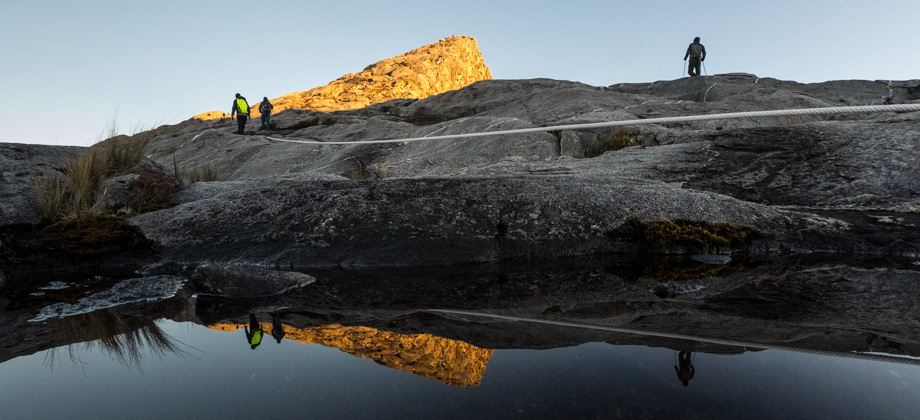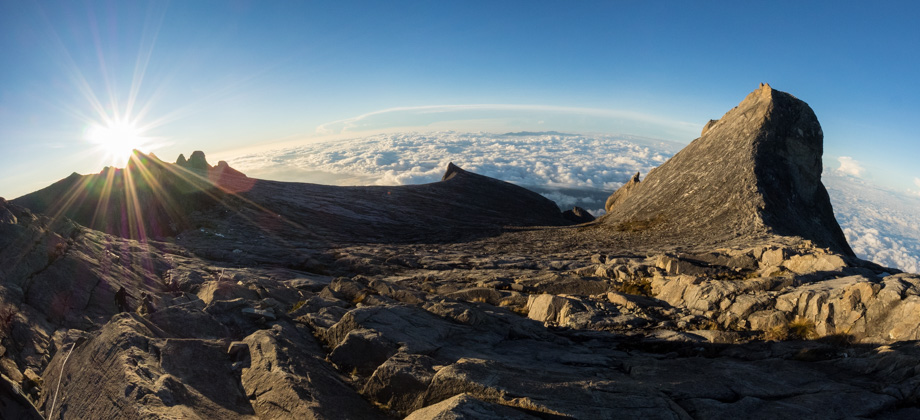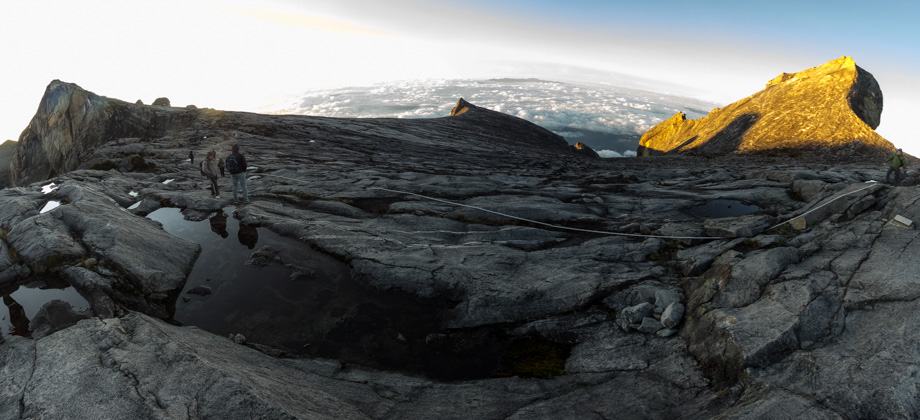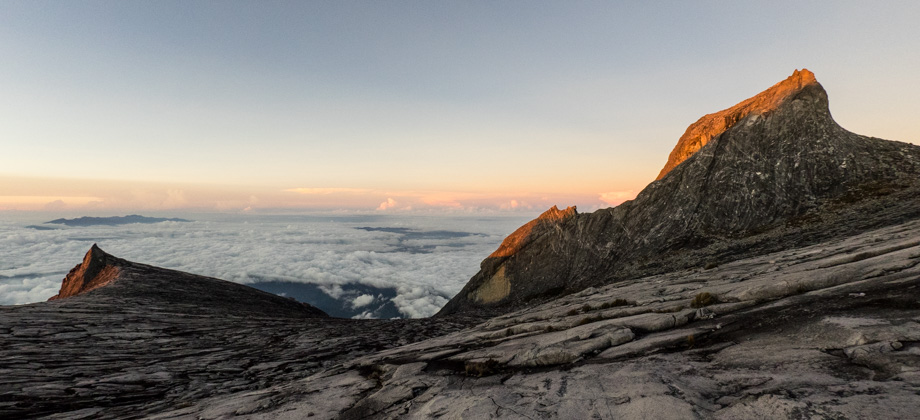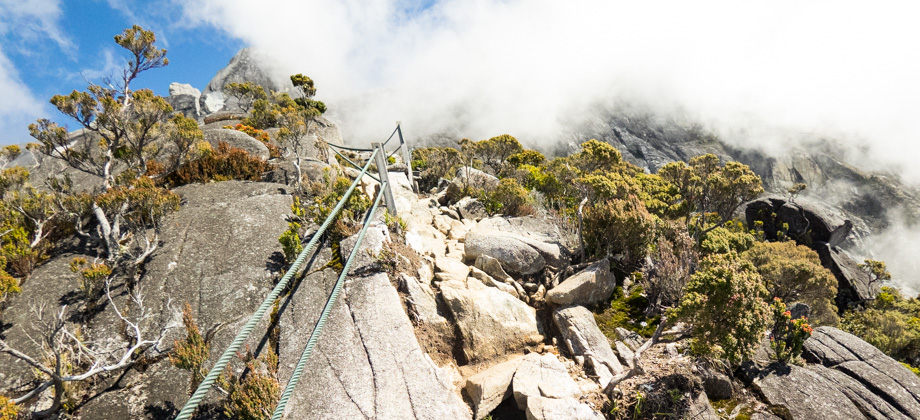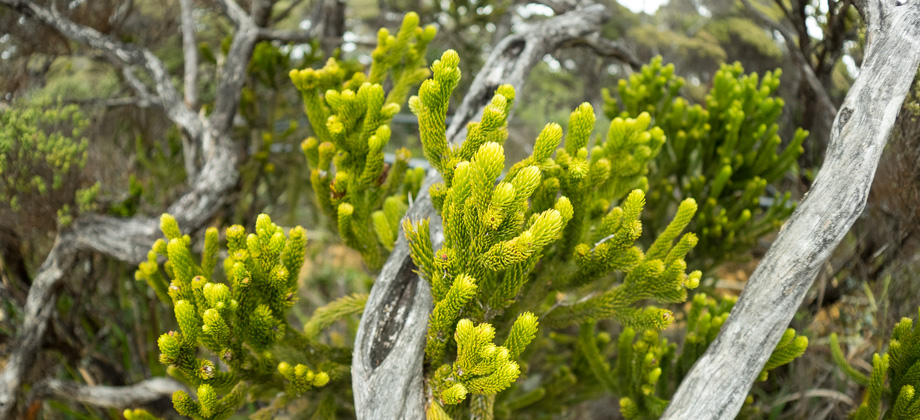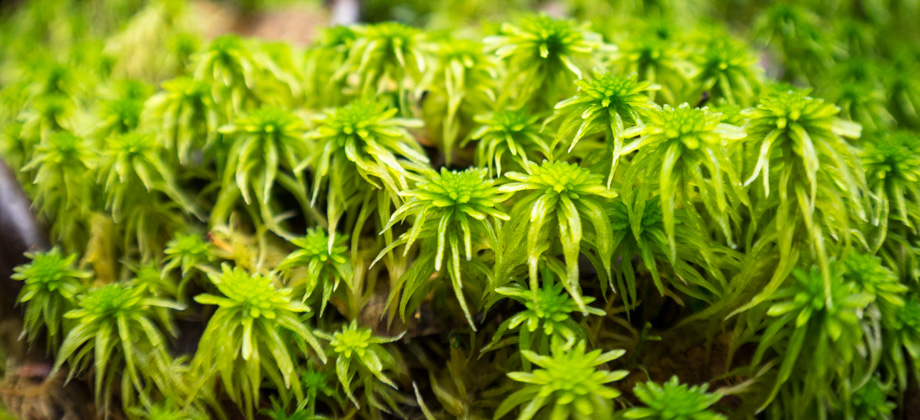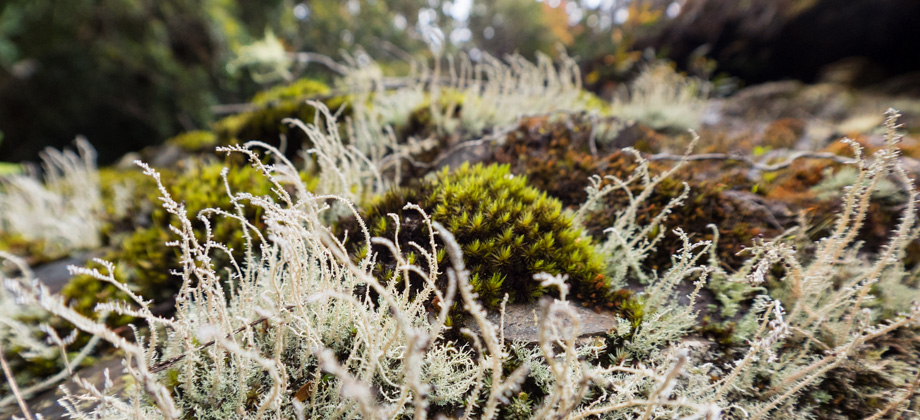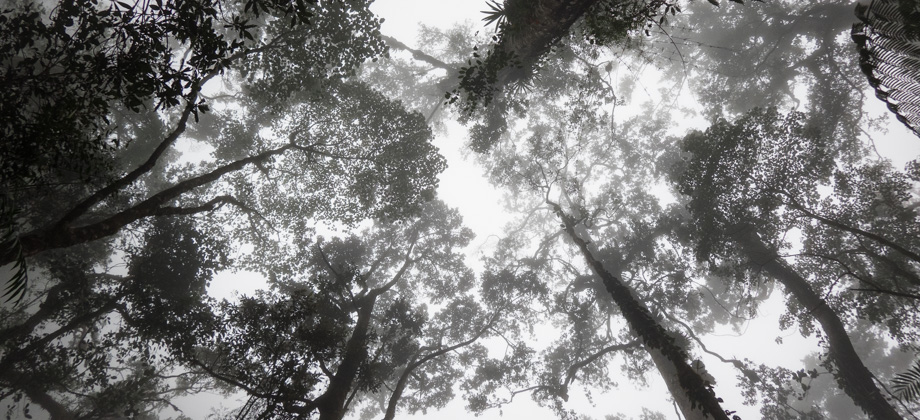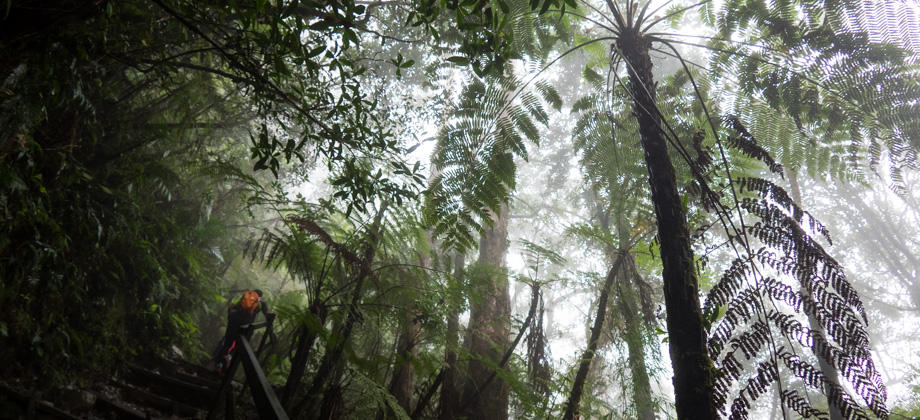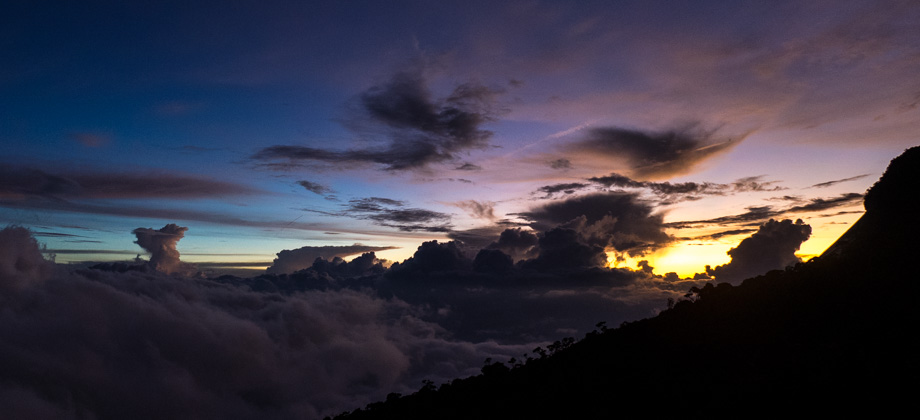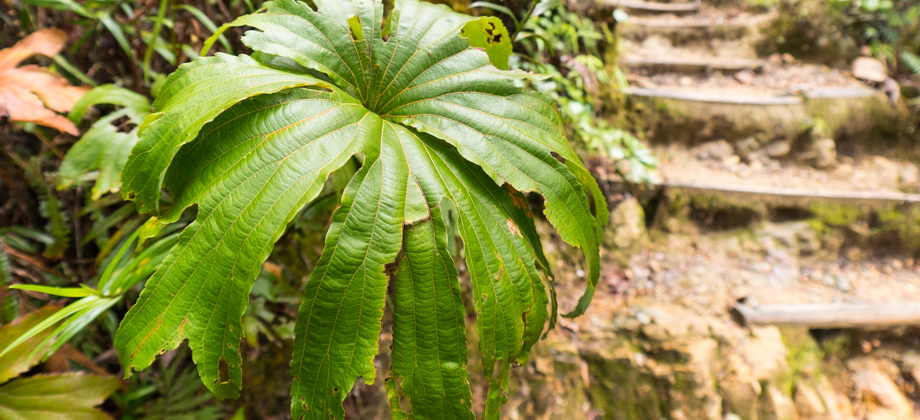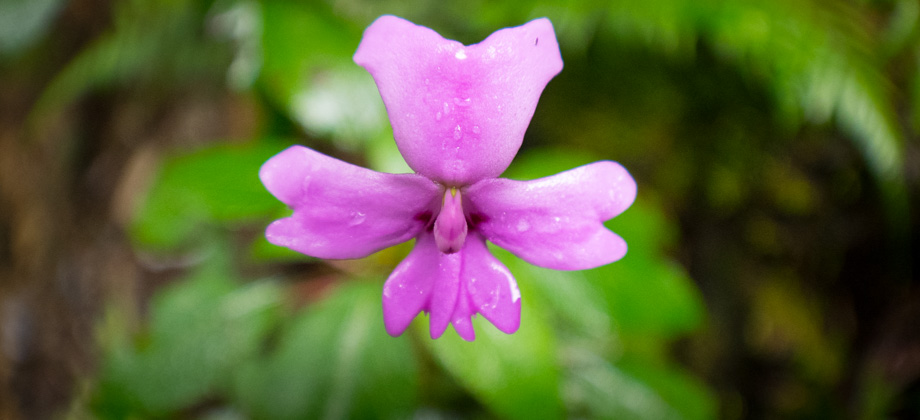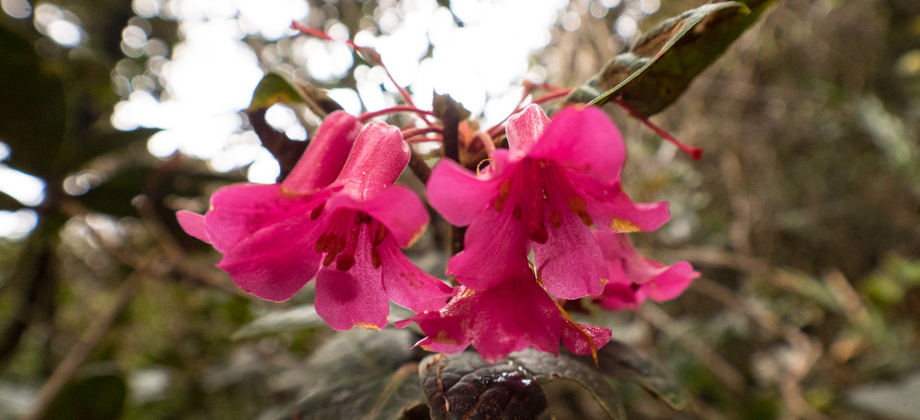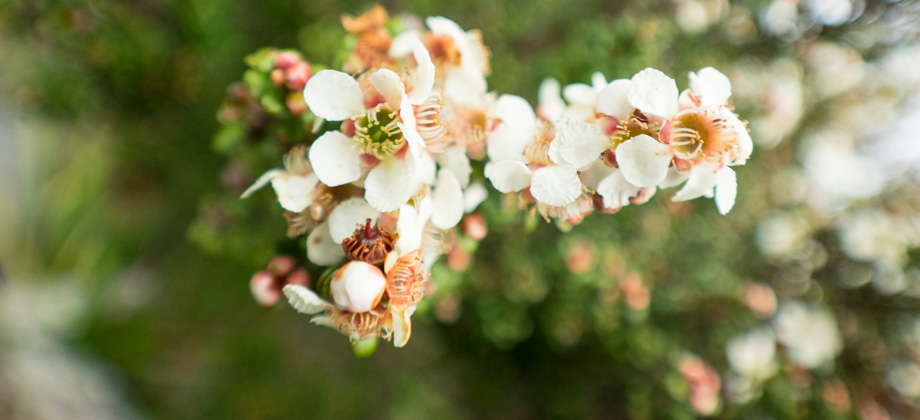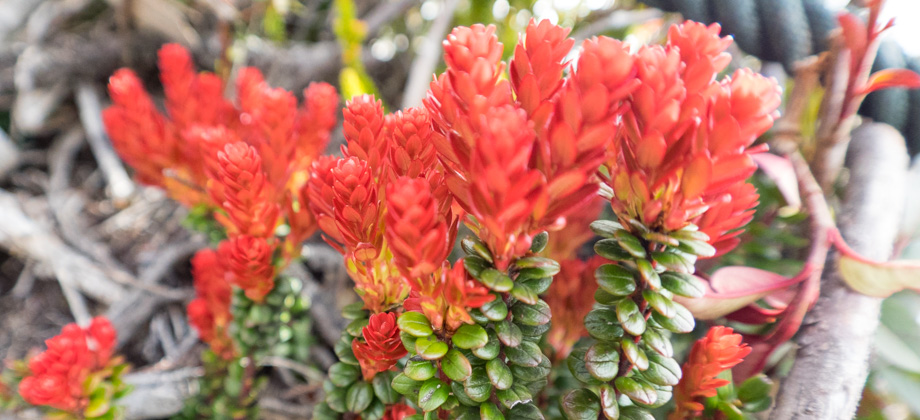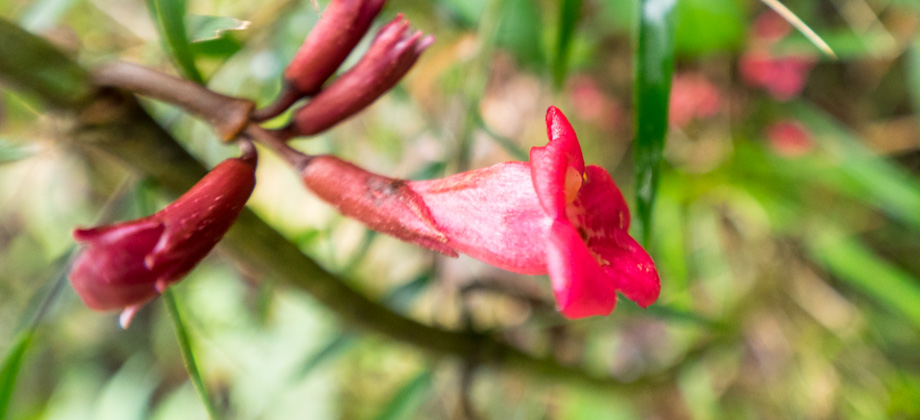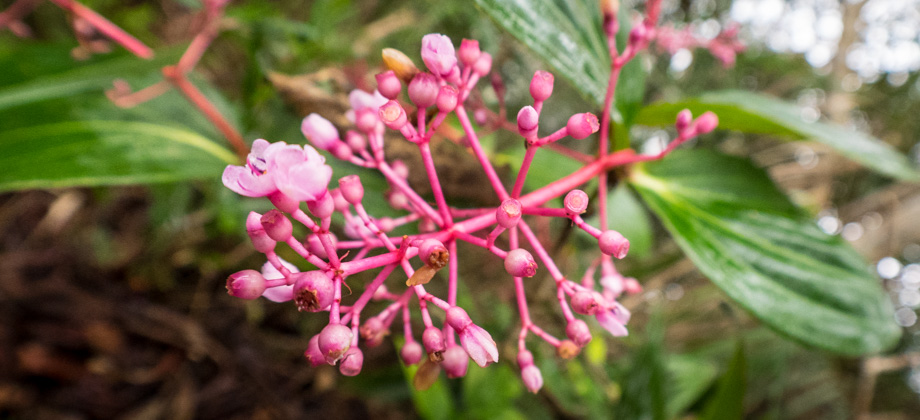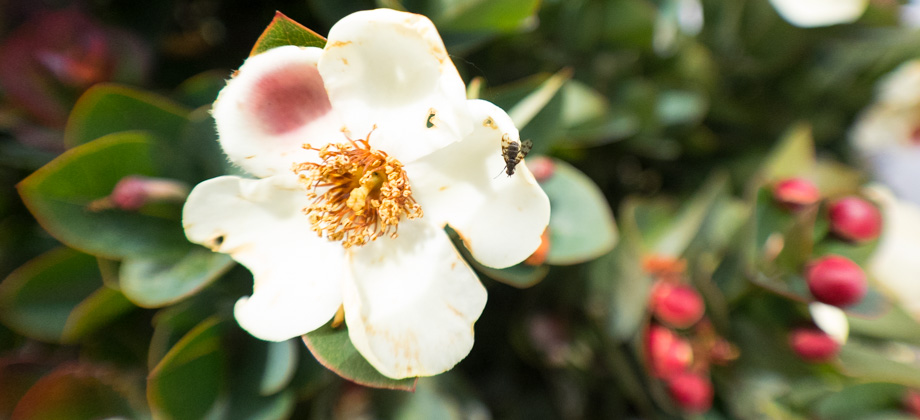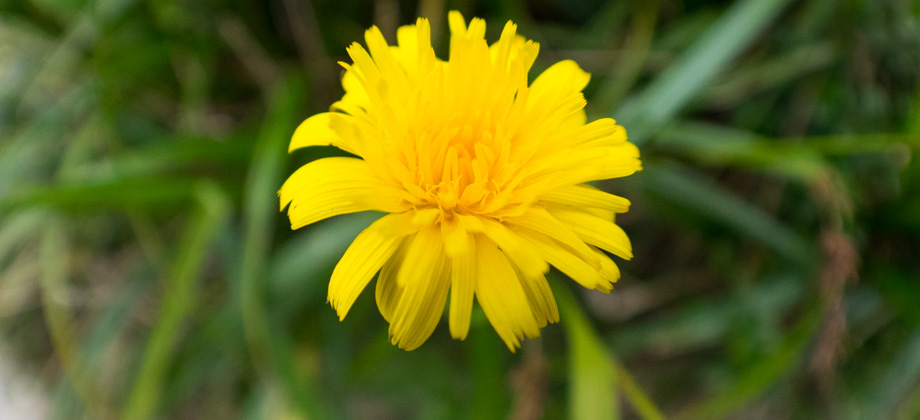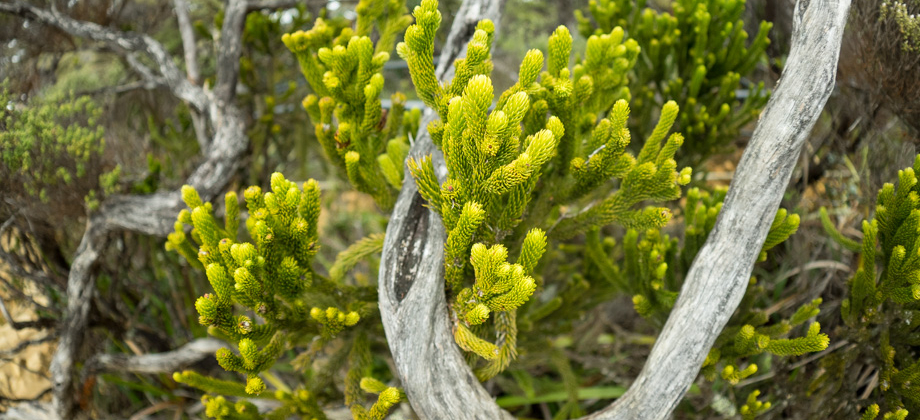Kinabalu via Timpohon Day 1 - To Laban Rata
Kinabalu Day 1 - Part 1 : Ferns Abound!
Kinabalu Day 1 - Part 2 : Montane Forests
Kinabalu Day 1 - Part 3 : Pitcher Plants
Kinabalu Day 1 - Part 4 : 2015 Earthquake
Kinabalu Index
Ferns Abound!



Lower Montane Forests
The higher elevations and the high humidity of the lower montane forests create conditions that are perfect for the development of peat. This is because the amount of partially decayed organic matter is highest when the temperatures are sufficiently high for plant growth, but are too low to sustain the microbial activity that helps the organic material break down. These conditions tend to also be ideal for epiphytes such as liverworts and mosses such as toothed sphagnum (Sphagnum cuspidatum), which carpeted absolutely everything in some sections of this trail. This moss actually comprises of two layers: the upper layer which you see at the top is live-growing moss cover, whilst the layers that lie beneath are known as sphagnum peat moss, and are composed of decaying organic matter. Peat moss is acidic and very absorbent which makes it both an anti-bacterial agent as well as a fungicide. This moss was apparently even used as a dressing for wounds during both World Wars! The long stalks of giant hairy-cap moss (Dawsonia superba) can also be found along the trail. This moss can grow to as tall as half a metre, making it one of the tallest mosses in the world. Unlike other mosses, Dawsonia mosses have a conduction system that is similar to that of vascular plants, and this is what allows it to achieve such great heights. The conduction systems are not the same however, as they evolved independently through convergent evolution. Most mosses require water for sexual reproduction, as the sperm requires a unbroken layer of water to be able to swim to the eggs to fertilize them. In the case of Dawsonia mosses however, their height makes this impossible. The sperm are instead dispersed when rain drops fall onto the gametophores and splash onto the forest floor.

